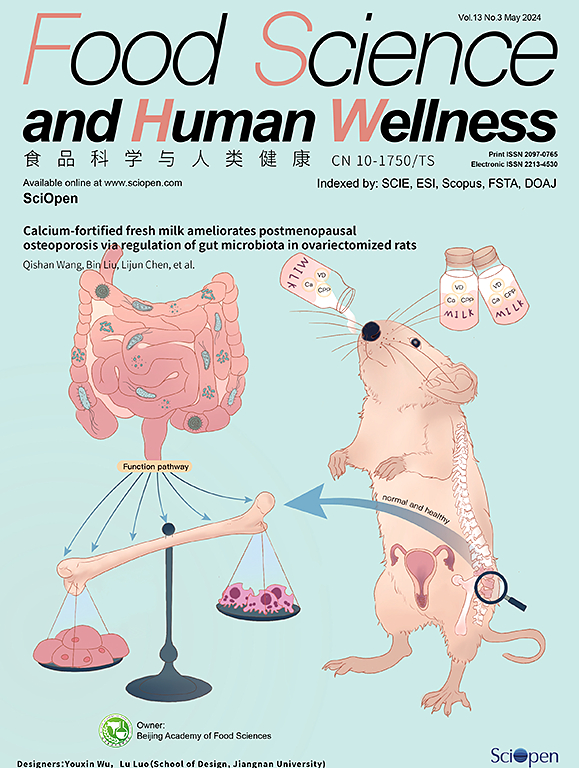DIA-based quantitative proteomic analysis on porcine meat quality at different chilling rates
IF 7.4
1区 农林科学
Q1 FOOD SCIENCE & TECHNOLOGY
引用次数: 0
Abstract
The objective of this study was to evaluate the effects of chilling rate on porcine meat quality from the perspective of proteome using data independent acquisition (DIA)-based quantitative proteomic strategy. M. longissimus thoracis et lumborum (n = 9) was assigned randomly to the control group (3.72 °C/h), very fast chilling-I group (VFC-I, 9.31 °C/h) and VFC-II group (14.43 °C/h). The DIA was used to analyze the difference in proteins under different chilling rates. Results showed that tenderness was improved significantly in meat at the chilling rate of 14.43 °C/h. Seventy-nine differential abundant proteins (fold change > 1.5, P < 0.05), including 46 up-regulated and 33 down-regulated proteins, were identified and mainly involved in carbon metabolism, pyruvate metabolism and proteasome pathways. These pathways indicated that VFC delayed cell metabolism and glycolysis by down-regulating the expression of metabolic enzymes. The tenderness was improved by up-regulating the expression of proteasome and m-calpain.
基于 DIA 的不同冷冻速率下猪肉质量的定量蛋白质组分析
本研究旨在采用基于数据独立采集(DIA)的定量蛋白质组学策略,从蛋白质组的角度评估冷冻速度对猪肉品质的影响。将长胸肌和腰肌(n = 9)随机分配到对照组(3.72 °C/h)、快速冷却-I 组(VFC-I,9.31 °C/h)和 VFC-II 组(14.43 °C/h)。使用 DIA 分析了不同冷却速度下蛋白质的差异。结果表明,冷冻速率为 14.43 °C/h 时,肉的嫩度明显提高。共鉴定出79个差异丰度蛋白(折合变化率为1.5,P为0.05),包括46个上调蛋白和33个下调蛋白,主要涉及碳代谢、丙酮酸代谢和蛋白酶体途径。这些途径表明,VFC 通过下调代谢酶的表达,延迟了细胞代谢和糖酵解。通过上调蛋白酶体和 m-calpain 的表达,嫩度得到改善。
本文章由计算机程序翻译,如有差异,请以英文原文为准。
求助全文
约1分钟内获得全文
求助全文
来源期刊

Food Science and Human Wellness
Agricultural and Biological Sciences-Food Science
CiteScore
8.30
自引率
5.70%
发文量
80
审稿时长
28 days
期刊介绍:
Food Science and Human Wellness is an international peer-reviewed journal that provides a forum for the dissemination of the latest scientific results in food science, nutriology, immunology and cross-field research. Articles must present information that is novel, has high impact and interest, and is of high scientific quality. By their effort, it has been developed to promote the public awareness on diet, advocate healthy diet, reduce the harm caused by unreasonable dietary habit, and directs healthy food development for food industrial producers.
 求助内容:
求助内容: 应助结果提醒方式:
应助结果提醒方式:


